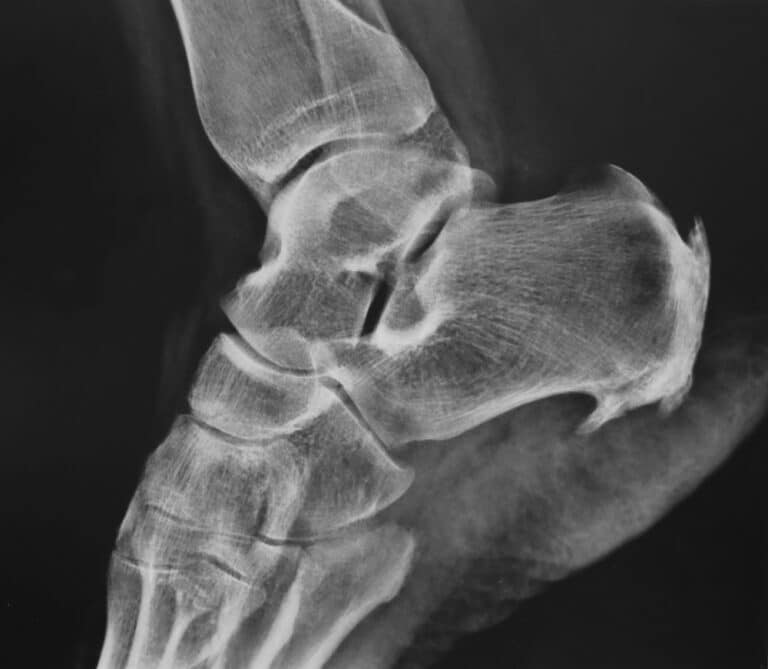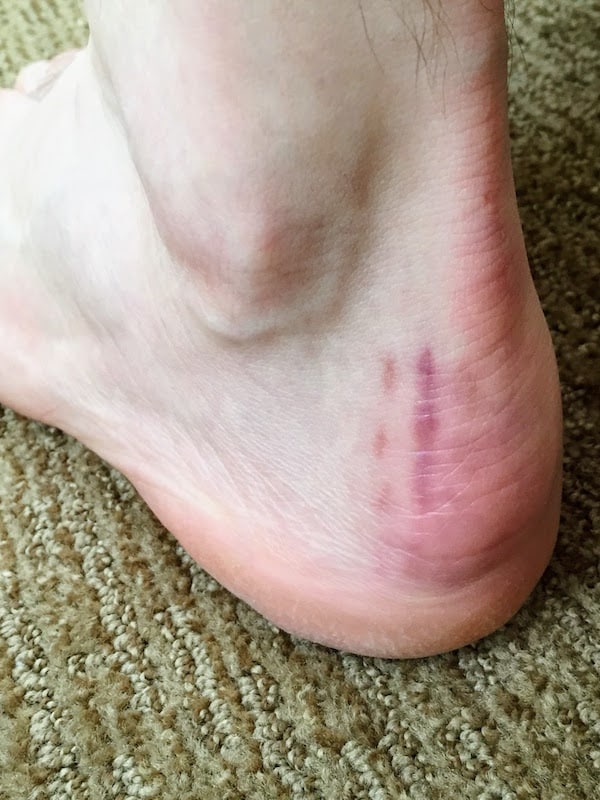Toe lengthening surgery, also known as toe augmentation or toe shortening surgery, is a procedure aimed at altering the length and appearance of the toes. It is often performed for both medical and cosmetic reasons, offering individuals the opportunity to achieve a more balanced and aesthetically pleasing toe structure.
Before undergoing toe lengthening surgery, it’s crucial to have a consultation with a qualified surgeon who will evaluate your foot structure and discuss your goals and expectations. This consultation will help determine if you are a suitable candidate for the procedure and allow you to ask any questions or address concerns you may have.
Get a $500 Off Discount on Toe Shortening Surgery
Toe Lengthening Surgery: Procedure and its Benefits
Understanding Toe Lengthening Surgery: Procedure and its Benefits
Toe lengthening surgery is a specialized procedure aimed at altering the length and appearance of the toes. It is performed for both medical and cosmetic reasons, providing individuals with the opportunity to achieve a more balanced and aesthetically pleasing toe structure.
The procedure typically involves making incisions to access the toe joints and may utilize various techniques depending on the desired outcome. For individuals seeking longer toes, bone grafts, implants, or other techniques may be used to extend the length of the toe bones. Conversely, if toe shortening is desired, a segment of the bone may be removed to achieve the desired length.
The benefits of toe lengthening surgery extend beyond cosmetic enhancement.
For individuals with conditions such as brachymetatarsia (short toe syndrome), the procedure can help restore normal foot function and improve walking and balance. It can also alleviate discomfort caused by toe abnormalities, such as overlapping or crowded toes.

In addition to improving foot function, toe lengthening surgery can have a positive impact on self-confidence and body image. Many individuals feel self-conscious about the appearance of their toes and seek the procedure to achieve a more proportionate and harmonious toe structure. The surgery allows them to feel more confident and comfortable in various footwear options, including open-toed shoes and sandals.
Factors to Consider Before Toe Lengthening Surgery
Before undergoing toe lengthening surgery, there are several important factors to consider. These factors can help you make an informed decision and ensure that the procedure aligns with your goals and expectations. Here are key factors to consider before toe lengthening surgery:
- Consultation with a Qualified Surgeon: Schedule a consultation with a qualified surgeon who specializes in toe lengthening surgery. During this consultation, discuss your concerns, goals, and expectations. The surgeon will assess your foot structure, determine if you are a suitable candidate for the procedure, and provide you with a clear understanding of what to expect.
- Realistic Expectations: Have realistic expectations about the outcomes of toe lengthening surgery. Understand that the procedure aims to improve the length and appearance of the toes but has limitations based on your foot structure and individual factors. Your surgeon will provide you with an honest assessment of what can be achieved based on your unique circumstances.
- Potential Risks and Complications: Understand the potential risks and complications associated with toe lengthening surgery. Like any surgical procedure, there are inherent risks, including infection, bleeding, scarring, nerve damage, and dissatisfaction with the results. Your surgeon will discuss these risks with you and address any concerns you may have.
- Recovery and Healing Time: Consider the recovery and healing time required after toe lengthening surgery. Understand that the process may involve swelling, bruising, discomfort, and limited mobility during the initial stages of recovery. Follow your surgeon’s postoperative instructions carefully to optimize healing and minimize complications.
- Lifestyle and Activity Modifications: Assess how toe lengthening surgery may impact your lifestyle and activities. Understand that there may be temporary limitations on footwear choices, physical activities, and weight-bearing during the recovery period. Discuss these considerations with your surgeon and ensure that you are willing to make any necessary modifications.
- Cost and Insurance Coverage: Evaluate the cost of toe lengthening surgery and whether it is covered by your insurance. It is important to discuss the financial aspects with your surgeon and understand the payment options available to you.
- Alternative Treatments: Explore alternative treatments or non-surgical options for achieving your desired outcome. Toe lengthening surgery is not the only solution, and your surgeon may recommend alternative approaches based on your specific condition and goals.
By carefully considering these factors and having open discussions with your surgeon, you can make an informed decision about toe lengthening surgery.
What to Expect Before, During, and After the Surgery
Before the Surgery:
- Consultation: You will have a consultation with your surgeon to discuss your goals, medical history, and expectations. The surgeon will evaluate your foot structure, conduct a physical examination, and may order additional tests or imaging to determine the most appropriate surgical approach.
- Preparation: Your surgeon will provide instructions on preoperative preparations, which may include fasting before the surgery, stopping certain medications or supplements, and arranging for someone to drive you home after the procedure.
During the Surgery:
- Anesthesia: You will be administered anesthesia to ensure your comfort during the surgery. The type of anesthesia used will depend on the specific procedure and your surgeon’s recommendation.
- Incisions and Surgical Technique: The surgeon will make carefully planned incisions to access the toe joints. The surgical technique will depend on whether you require toe lengthening or shortening. The surgeon will perform the necessary procedures to achieve the desired outcome, such as bone grafting, bone removal, or joint adjustments.
- Closure: Once the necessary adjustments are made, the surgeon will close the incisions using sutures or other closure techniques. Sterile dressings or bandages will be applied to protect the surgical site.

After the Surgery:
- Recovery Room: You will be monitored in a recovery room until the effects of the anesthesia wear off. Pain medication may be provided to manage any discomfort or pain.
- Postoperative Care: You will receive instructions from your surgeon regarding postoperative care. This may include keeping the foot elevated, taking prescribed medications, and following a specific dressing or wound care regimen.
- Weight-Bearing and Mobility: Your surgeon will provide guidance on weight-bearing and mobility restrictions during the initial recovery period. You may need to use crutches, a walker, or wear a protective boot to minimize pressure on the surgical site.
- Follow-Up Appointments: You will have scheduled follow-up appointments with your surgeon to monitor your progress, assess healing, and remove any sutures. These appointments are crucial for ensuring proper healing and addressing any concerns or complications.
- Rehabilitation and Physical Therapy: Depending on your specific case, your surgeon may recommend rehabilitation exercises and physical therapy to aid in the recovery process. These exercises can help improve strength, flexibility, and mobility in the foot.
It’s important to closely follow your surgeon’s instructions, attend all follow-up appointments, and communicate any concerns or unexpected symptoms during the recovery period. Each individual’s recovery experience may vary, and your surgeon will provide personalized guidance based on your specific case.
Tips for a Smooth Healing Journey
A smooth healing journey after toe lengthening surgery is essential for optimal recovery and successful outcomes. Here are some tips to promote a smooth healing process:
- Follow Postoperative Instructions: Strictly adhere to the postoperative instructions provided by your surgeon. This may include guidelines on wound care, medications, weight-bearing restrictions, and activity modifications. Following these instructions is crucial for optimal healing.
- Manage Pain and Discomfort: It is normal to experience some pain, swelling, and discomfort after toe lengthening surgery. Take prescribed pain medications as directed to manage pain effectively. Applying ice packs to the surgical area for short periods can also help reduce swelling.
- Rest and Elevate: Elevating your foot above heart level can help reduce swelling. Resting and avoiding excessive weight-bearing activities during the initial healing phase is essential for proper recovery. Follow your surgeon’s recommendations regarding weight-bearing restrictions and gradually increase activity levels as advised.
- Protect the Incision: Keep the surgical site clean and dry to prevent infection. Avoid soaking the foot in water until cleared by your surgeon. Follow their instructions for changing dressings, keeping the incision site covered, and avoiding activities that may cause trauma to the area.
- Wear Supportive Footwear: Use comfortable, supportive footwear recommended by your surgeon. This will provide stability, cushioning, and protect the foot during the healing process. Avoid tight-fitting or high-heeled shoes that may put pressure on the surgical site.
- Physical Therapy and Rehabilitation: Your surgeon may recommend physical therapy or specific exercises to improve strength, flexibility, and mobility. Engaging in prescribed rehabilitation exercises can help restore normal function and speed up the recovery process.
- Communicate with Your Surgeon: If you experience any unexpected symptoms, increased pain, or concerns during your recovery, promptly communicate with your surgeon. They are best equipped to address your questions and provide necessary guidance.
- Be Patient: Every individual’s healing timeline is unique. It is important to be patient with the recovery process and not rush into activities or sports before you have fully healed. Follow-up appointments with your surgeon will allow them to monitor your progress and make appropriate recommendations.
By following these tips and maintaining open communication with your surgeon, you can support a smooth healing journey and maximize the chances of a successful outcome after toe lengthening surgery.
Post-Surgery Care and Lifestyle Adjustments
Post-surgery care and lifestyle adjustments are crucial for a successful recovery and long-term results after toe lengthening surgery. Here are some key considerations to ensure a smooth healing process:
- Follow Your Surgeon’s Instructions: Strictly adhere to the post-surgery instructions provided by your surgeon. This includes wound care, medication usage, and activity restrictions. Following their guidance will promote proper healing and minimize the risk of complications.
- Protect the Surgical Area: Keep the surgical area clean and dry to prevent infection. Follow the recommended dressing changes and keep the incision site covered as instructed. Avoid exposing the foot to excessive moisture or trauma during the healing process.
- Manage Pain and Swelling: Take prescribed pain medication as directed to manage any discomfort. Applying ice packs to the surgical area can help reduce swelling. Follow your surgeon’s recommendations for pain management techniques and consult them if you experience severe or prolonged pain.
- Elevate and Rest: Elevate your foot above heart level as much as possible during the initial healing phase. This helps reduce swelling and promotes blood circulation. Avoid excessive weight-bearing activities and provide adequate rest for the foot to allow for proper healing.
- Gradual Weight-Bearing: Your surgeon will provide specific guidelines on when and how to start weight-bearing activities. Follow their recommendations and gradually increase weight-bearing as tolerated. Using assistive devices like crutches or a walker may be necessary initially.
- Wear Proper Footwear: Use supportive and comfortable footwear recommended by your surgeon. This will provide stability, cushioning, and protect the foot during the healing process. Avoid tight-fitting shoes or high heels that may put pressure on the surgical site.
- Physical Therapy and Rehabilitation: Engage in prescribed physical therapy exercises and rehabilitation programs as recommended by your surgeon. These exercises will help improve strength, flexibility, and mobility in the foot, enhancing your overall recovery and functional outcomes.
- Communication with Your Surgeon: Stay in close contact with your surgeon throughout the recovery process. Report any unusual symptoms, concerns, or complications promptly. Attend follow-up appointments as scheduled to monitor your progress and address any issues that may arise.
- Gradual Return to Activities: Gradually reintroduce activities and exercises as approved by your surgeon. Avoid high-impact or strenuous activities until you have fully healed. Listen to your body and gradually increase the intensity and duration of physical activities as your foot strengthens and recovers.
- Maintain a Healthy Lifestyle: Adopting a healthy lifestyle can support the healing process. This includes eating a balanced diet, staying hydrated, getting enough rest, and avoiding smoking or excessive alcohol consumption, as these factors can impact the body’s healing capabilities.
Remember, everyone’s recovery timeline may vary, and it’s important to be patient and follow your surgeon’s recommendations.
Consultation and Customization: Tailoring Toe Lengthening Surgery to Your Unique Needs
The first step in the process is to schedule a consultation with a qualified surgeon who specializes in this procedure. During the consultation, you will have the opportunity to discuss your concerns, desired outcomes, and ask any questions you may have.
The surgeon will conduct a thorough examination of your feet, taking into consideration factors such as the length of your toes, foot structure, and overall foot health. They will also assess your medical history and any previous treatments you may have undergone for toe-related issues.
During the consultation, customization is key. The surgeon will listen to your goals and expectations, taking into account your unique foot structure and aesthetics. They will work closely with you to develop a personalized surgical plan that addresses your concerns and helps achieve the desired outcomes.
References:
Bunion Surgery Miami. (n.d.). Toe Lengthening for Brachymetatarsia. Retrieved from https://bunionsurgerymiami.com/toe-lengthening-brachymetatarsia/




